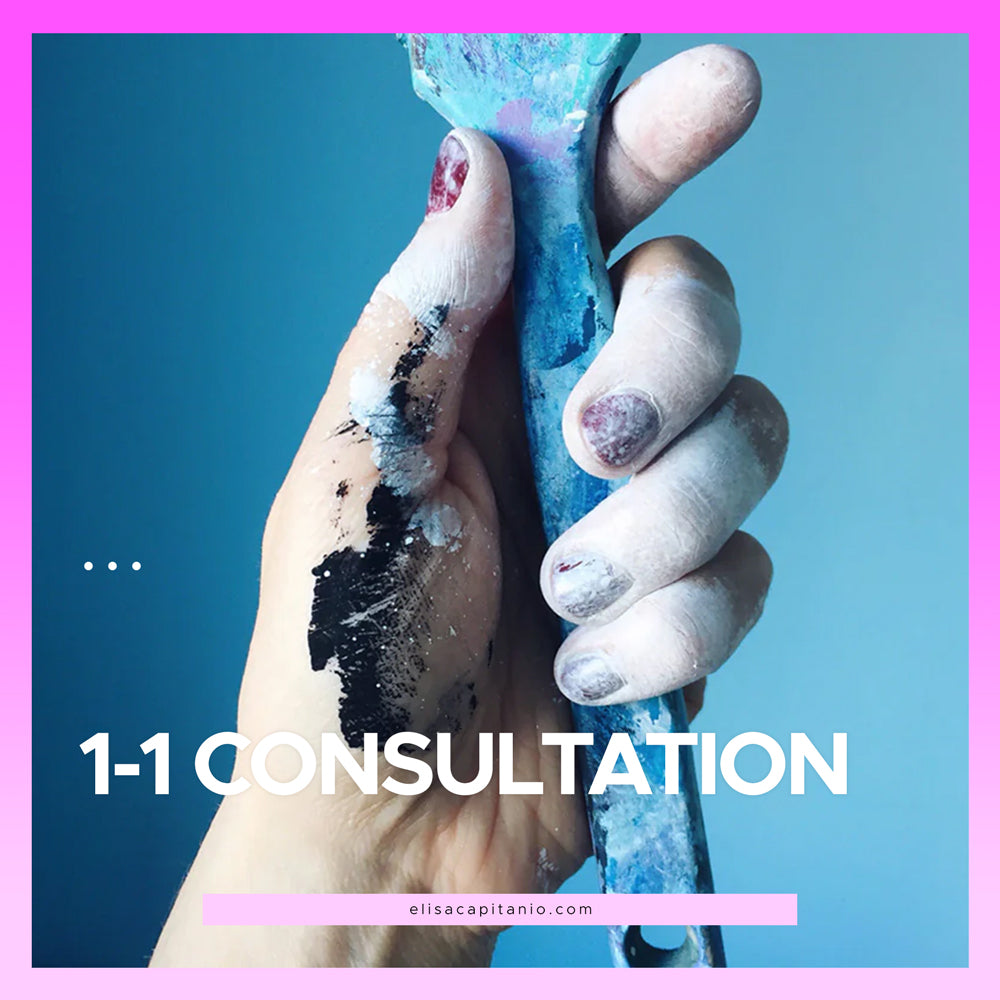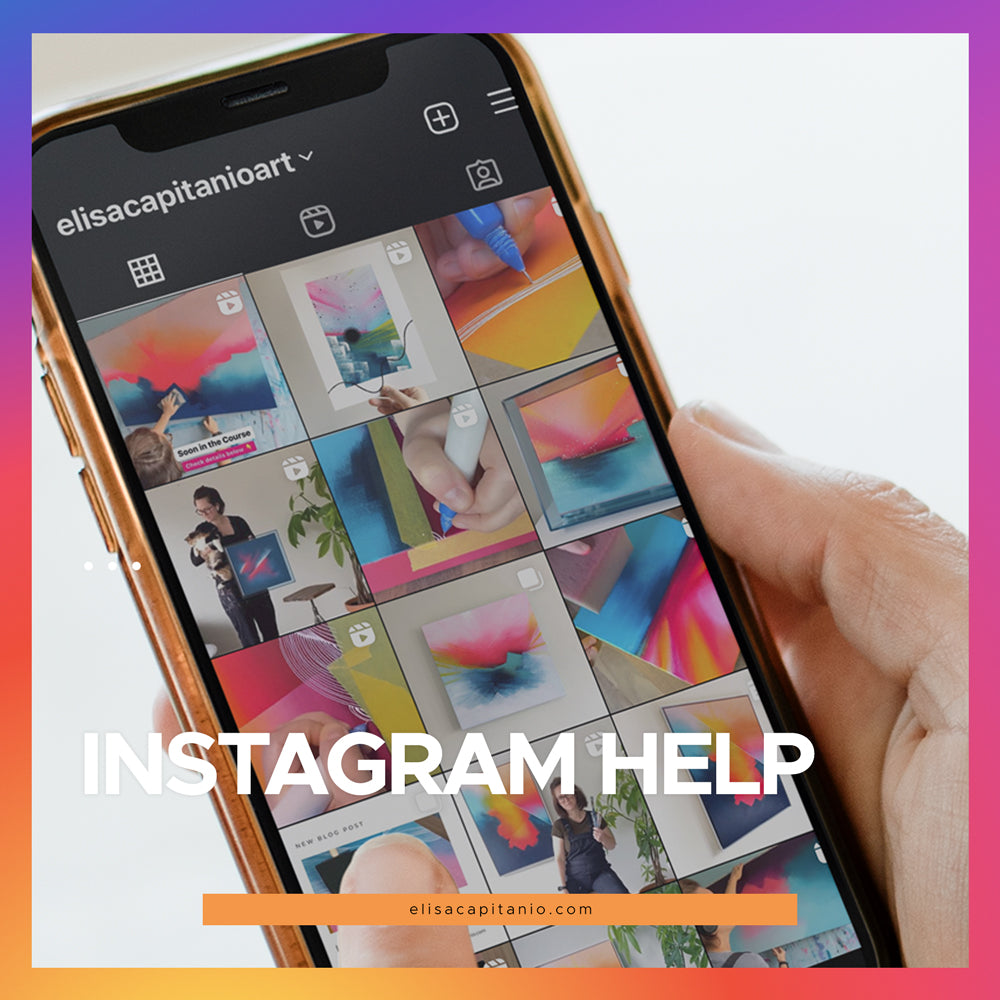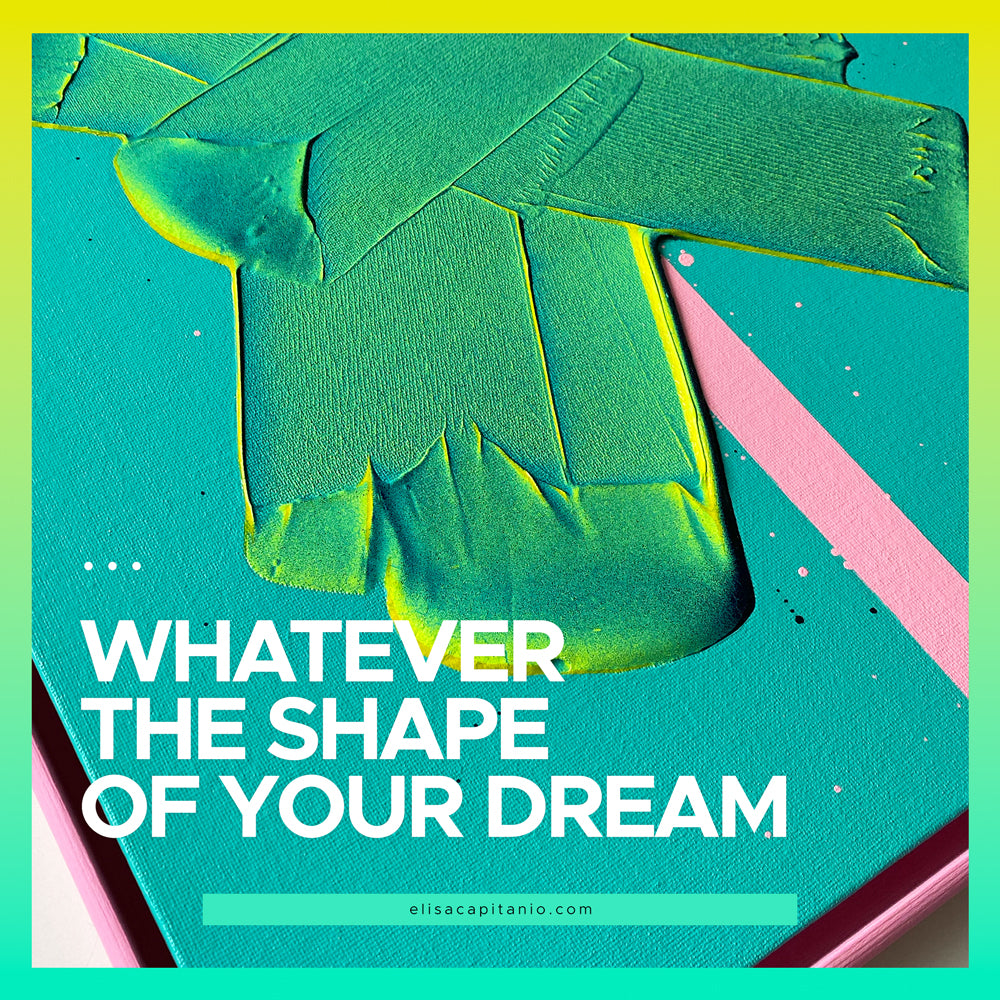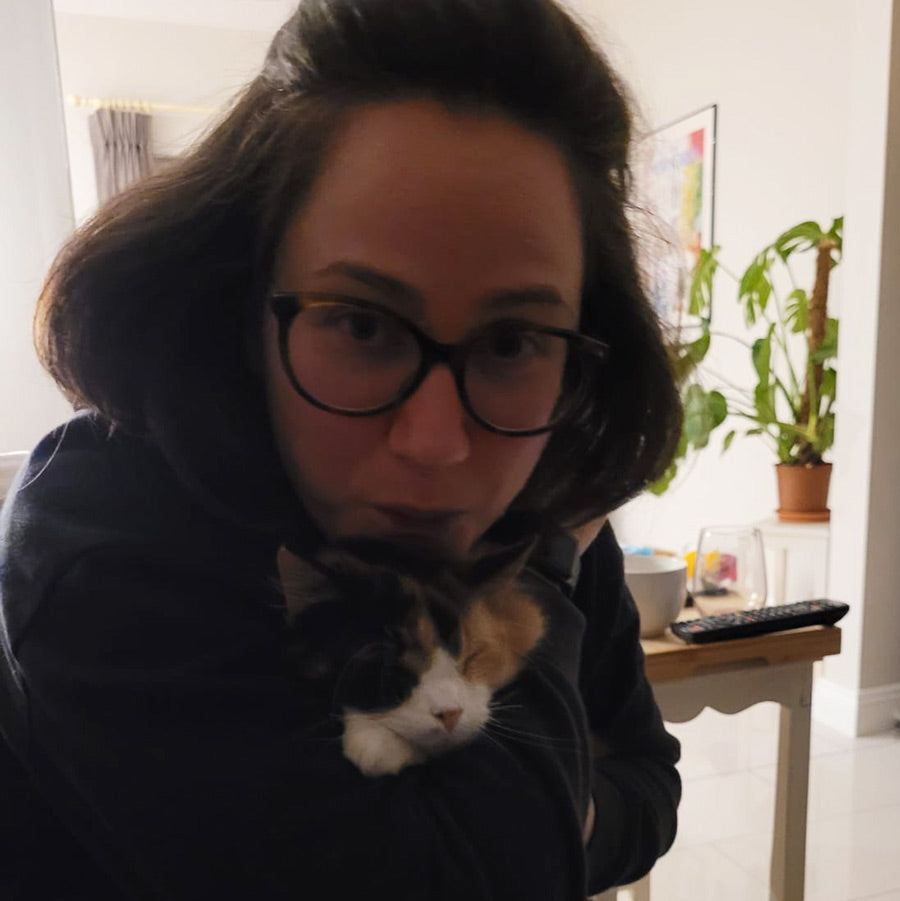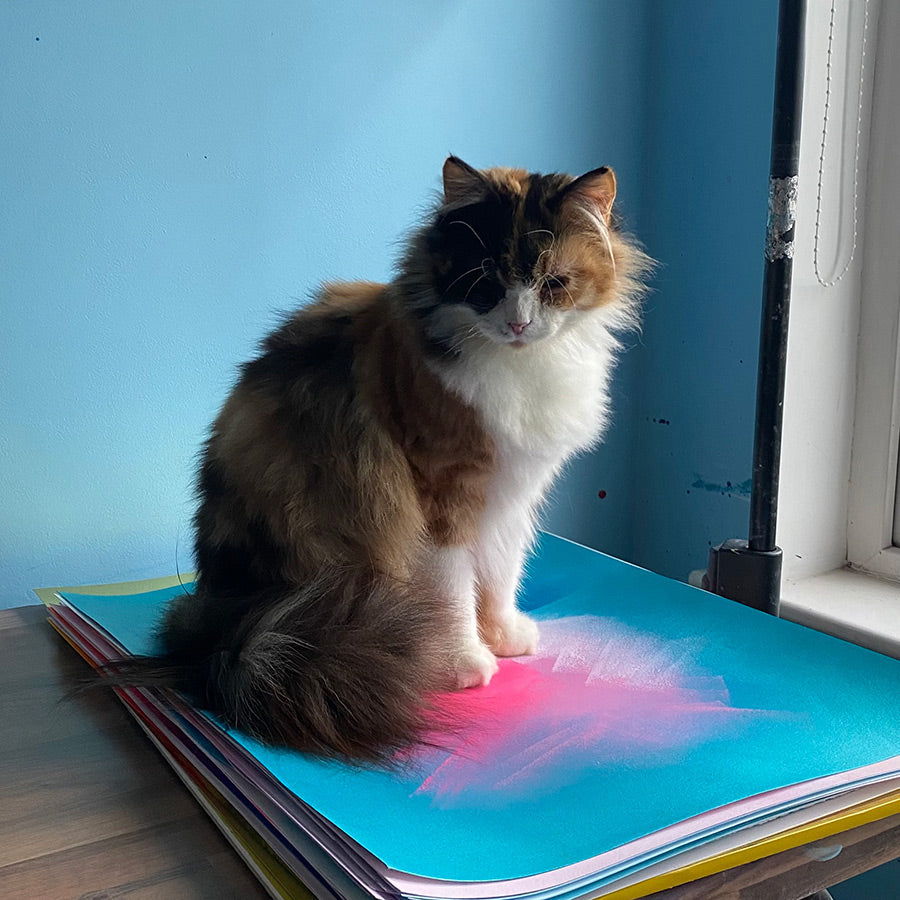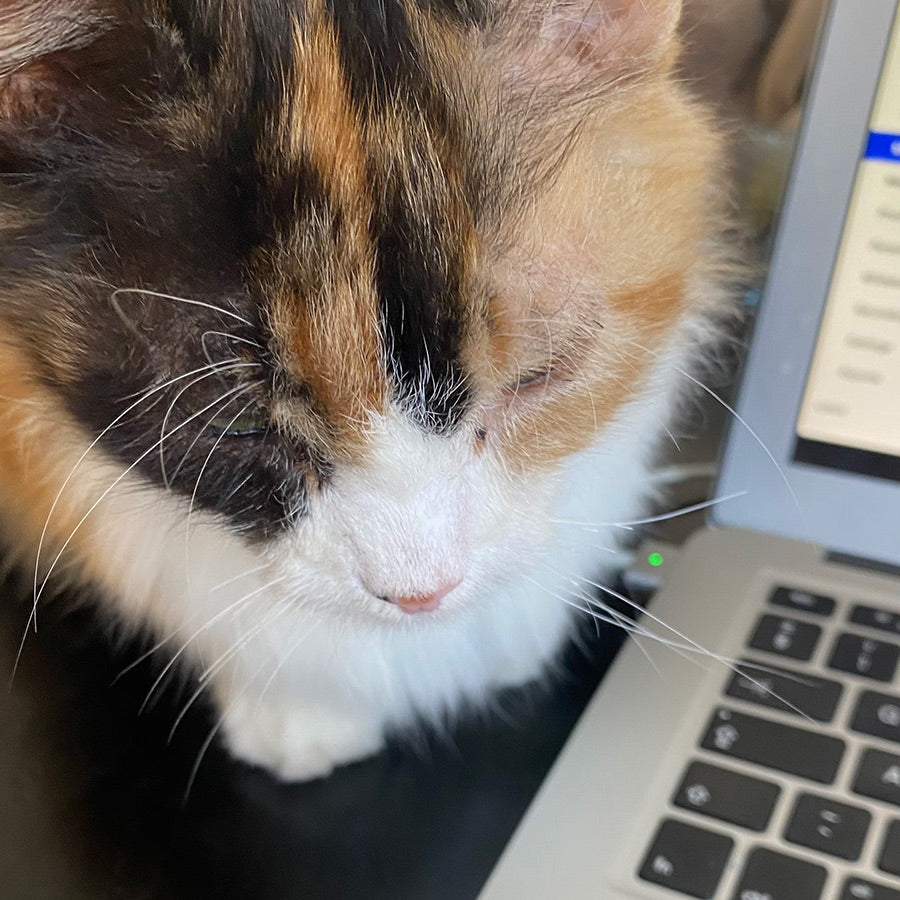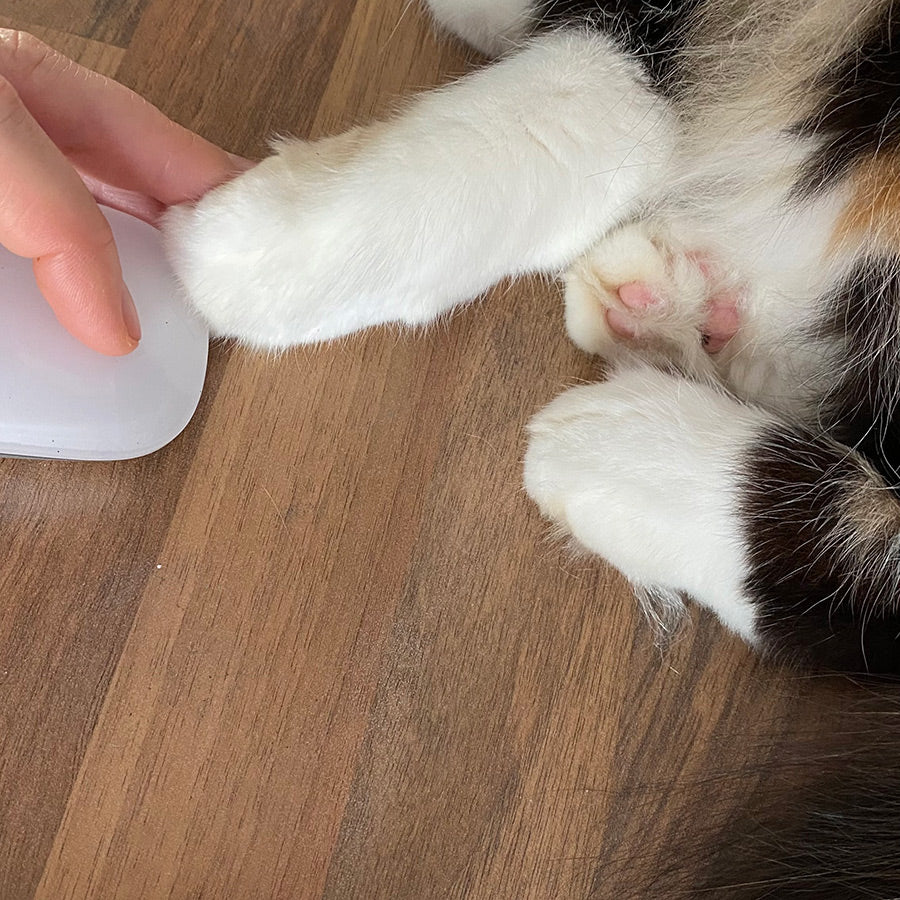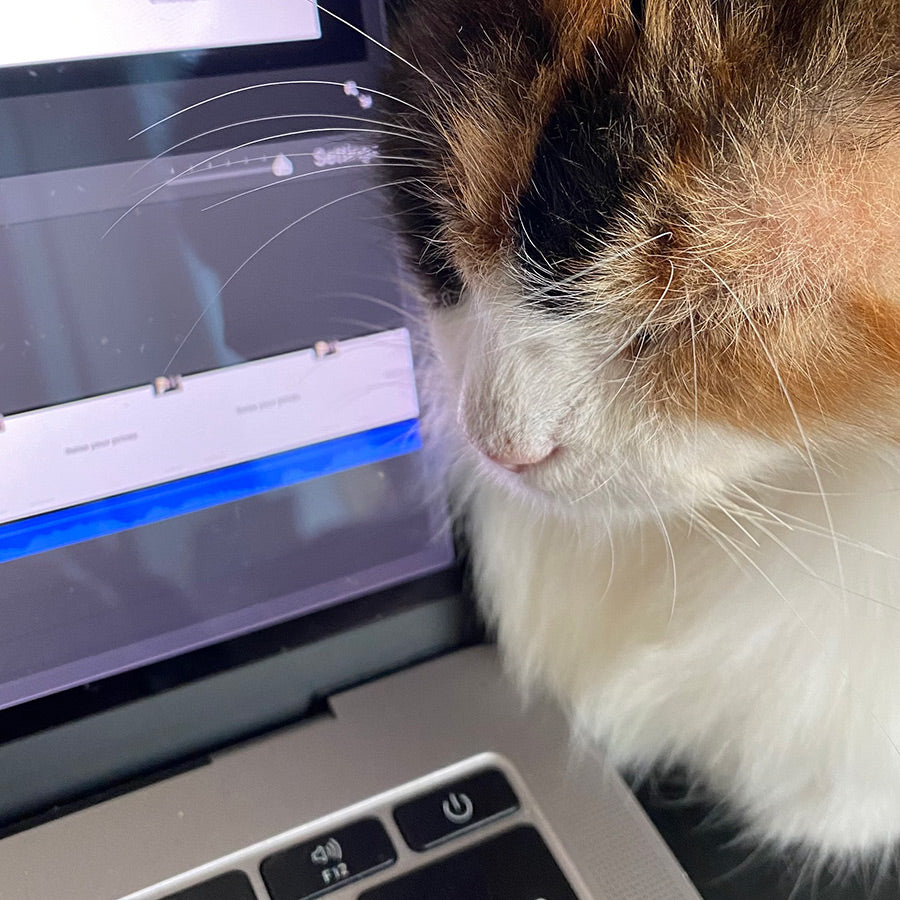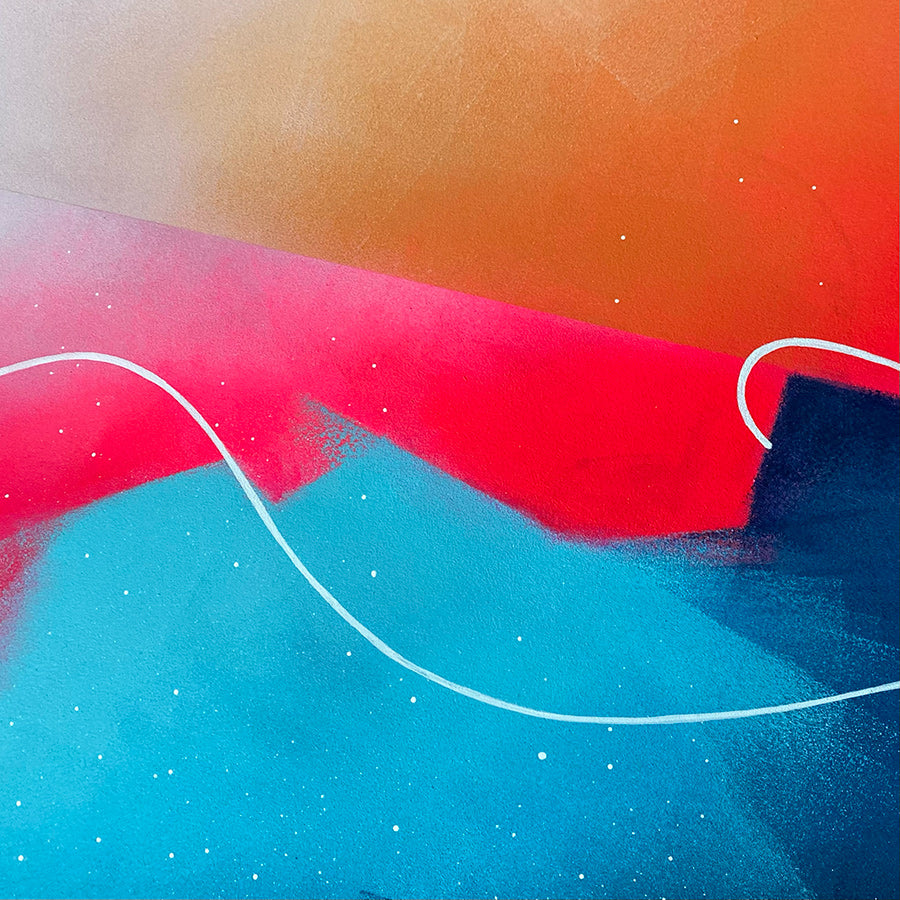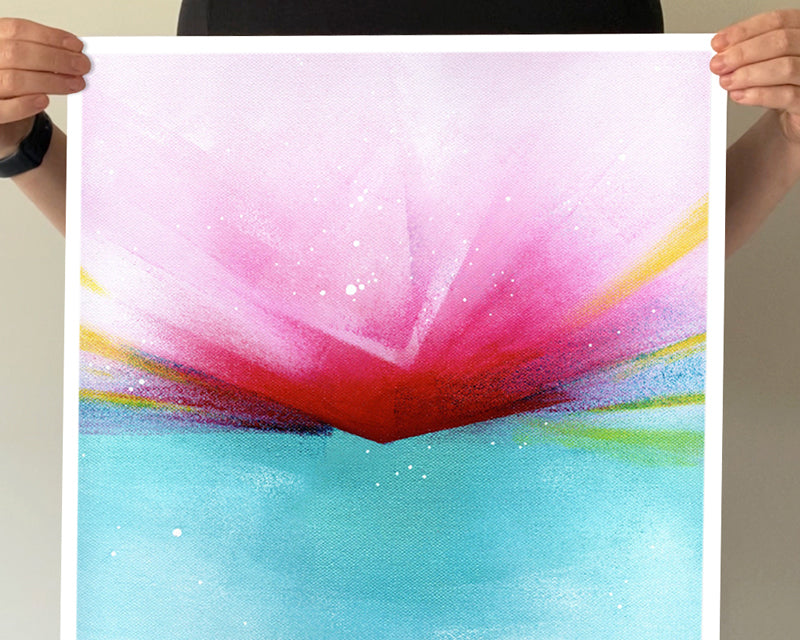
Creating Prints of Your Art - How To
I have been debating with myself (happens quite frequently!!) for months about creating and offering prints on my website.
And no, I haven’t had arguments with myself about the concept of unicity of my work. Well, also that, but that's a story for another time!
But on the logistics of offering high quality prints while keeping costs down and handling the actual printing process and shipping.
And my problem isn’t that I know too little about the topic. The opposite actually! Graphic designer at heart.
At first I thought I had to do all the printing in the studio. I said to myself “That’s the only way to go to ensure the print is going to look exactly like the original artwork.”
Then, after spending a few days looking for printers that could handle big size paper I started seeing the limits of this idea.
Bla bla bla… debate debate debate… more bla bla bla…
I had to draw the line somewhere. And that line appeared before my eyes one afternoon when I went down the Amazon rabbit hole looking for big size scanners that would cost me €4k. Nope.
I closed my computer and said “I have to outsource this, there’s no way I can handle the whole process by myself”.
Sometimes realising you need to ask for help is the kindest thing you can do for yourself.
Now, I'm perfectly aware I could have handled everything at home. We have a A3 printer that comes with a A4 size scanner.
However, scanning big 1x1m paintings to print them on a A4 paper... that wasn't the dream.
Also, I didn't want to find a local printer, produce 20 prints and then maybe not sell them... I needed to print on demand. Less risky, smaller investment.
Thank you for reading all the above.
Now, for the juicy part.
Here’s how I’m handling prints.
This blog post will guide you through the process of creating high-quality prints of your artwork, from capturing the perfect image to selling them through an integrated platform.
Before You Take Pictures
Your equipment...
You need a camera, and maybe a tripod (I do not use a tripod, but I’d recommend one to avoid shaky pictures), light and your artwork.
Your camera: the higher resolution it can take pictures the better, so the bigger your prints can be.
I have a Canon CR3. The most important aspect is the resolution, so if you need to buy a new one, go to an actual shop (online research can be veeery long and complicated!) and ask questions, get them to take a test if they can.
Your scanner: If you work on small scale artworks, you might want to scan your artworks rather than take pictures.
I own a print/scanner Epson ET 15000 but I couldn't handle big artwork scans because the scanner cover isn't detachable.
I opted for a camera but if you have a good scanner, and your art fits there, a scanner is always better than a picture!
Light: as natural as possible but not direct. Natural light is good, but if you own a studio light it might help you balance the light source.
These are the lights I own. I use them quite a lot to balance the ... Irish weather also when I'm recording my process.
Your artwork: in this blog post I'm talking about canvases.
I think there is a conversation to be had about what's worth investing time and money on for this printing process for smaller (more affordable) artworks.
I've done my first printing test on an artwork on paper, however, I decided - for the moment - to only focus on artworks on canvas.
Capture your RAW Image
To start the process, it is crucial to capture a high-resolution photograph of your artwork. You can use a digital camera or a smartphone with a high-quality camera to take a RAW image.
RAW files contain all the data captured by the camera sensor and offer greater flexibility for editing later on.
Now, I understand the details of camera settings and colour correction in photo editing but I wouldn't consider myself a photography expert.
So if you need to learn more about the topic, you can ask me directly but otherwise Google will be your bff here.
Deciding on the size of your prints
This aspect had me stressed quite a bit when I first started considering the idea of creating art prints.
The most crucial concern was figuring out the maximum size I could print without compromising on quality.
There are numerous resources available online to do pixel calculations, but here you can find a clear explanation of the print sizes achievable based on your camera’s megapixels.
For instance, my camera is a Canon CR3 and RAW images are 50.8x33.87cm / 20x13.3in at 300 dpi (dot per inch) which is the resolution you want to keep.
So that means one RAW picture of my camera can print bigger than a A3.
What if you want to go bigger?
The options are: you take multiple pictures of your artwork and then try to assemble them in Photoshop (not recommended as light and perspective will change a lot and take hours and hours of editing) or you try the Super Zoom Neural Filter in Photoshop (Photoshop Beta at the moment).
If you have a good picture to start with, then this filter is going to blow your mind and the size of your picture up! Magic!!
Light
If you can, use diffused Light Soft Boxes
It's crucial to avoid harsh light when photographing your work, particularly for glossy materials.
Make sure light isn't creating any irregular shapes on your artwork and avoid positioning lights directly in front of the work.
Place the artwork in natural light and then balance that with the light boxes to make an even surface.
The better the original picture, the less editing work you have to do.
Take that picture, baby :)
Set your camera in front of the painting. Adjust the lens to capture the piece fully in the viewfinder without cropping your work.
Avoid using flash as glare is not desirable. Considering I'm not an expert photographer, I set the camera to auto.
Configure the camera to RAW and shoot 2/3 pictures
Then transfer them via the SD card to your laptop for editing.
Editing Photos
You need a good monitor and a photo editing tool, I use Adobe Photoshop.
99.9% of your pictures will need editing, despite having excellent lighting and equipment, photo tweaking for printing is usually necessary.
A RAW file is an uncompressed and unprocessed image and shooting in RAW allows you to captures a high level of image detail, with large file sizes and lossless quality.
Once in Photoshop, you'll need to adjust lens perspective sometimes, levels, brightness, contrast, and colour balance to accurately represent your original artwork.
This process takes time, but don't worry, if you’re new to editing, the best way to understand what to do is to watch a YouTube video. There are plenty of tutorials online.
I’m not planning on creating a tutorial at the moment, but I’m happy to walk you trough my ending process in my 1-on-1 consultation, if you wish!
Once you’re happy with your edited image, use the Neural Filter (currently in Photoshop Beta) and use the Super Zoom filter to boost the size of your artwork once or twice, depending on the original picture size.
This will increase the printing size, without compromising quality.
Save the best version of JPG you can.
Integrate with Gelato.com
There are plenty of companies out there that can provide prints for you.
I had few things I wanted and wasn’t willing to compromise on that lead me to Gelato.com
1. Irish Production Hub
Things I complain about Ireland: Weather. Food. And the amount of stuff we import from other countries, often the UK.
My main market is Ireland, having prints produced in and sent from the UK would mean extra costs that I do not want my customers to have. Plus longer shipping.
2. Integration with my website.
I want my customers to go trough my website and buy from me, so I have full control of what I’m showing them, the price I’m charging and generally ensuring their buying process isn’t fractured on multiple sites.
My website is set up on Shopify and there's a very easy integration process between Shopify and Gelato.
Gelato offers a user-friendly interface that allows you to effortlessly manage your print orders and they also have an app (yay).
This integration provides a seamless experience for customers, from browsing artworks to placing orders for prints.
Create Sizes and Product Descriptions
We are almost there...
Diversify your print offerings by creating multiple sizes and product options.
Gelato, like many other similar platforms, offers a range of print formats, such as posters, canvas prints, and framed prints.
I decided to opt for a one type of poster only, to keep it simple.
Then make sure to customise the product descriptions for each option, highlighting the unique features and qualities of your artwork.
Price Strategically
When determining the pricing for your prints, consider covering your expenses and ensuring a reasonable profit margin.
Take into account the time you spent creating all the material.
Research the market to understand the price range for similar prints, and factor in the value of your artistry and brand.
And look... don't stress too much over this. You can always change your prices and the best part is that you don't owe explanations to anybody.
Place a Test Order
Before launching your prints for sale, it's essential to place a test order to ensure the quality and accuracy of the prints.
Request a sample of each size and format to evaluate the colour accuracy and overall print quality. Compare the prints with your original artwork to ensure a close match.
A print will never be as good as the original artwork, but you can get pretty close and that's good enough.
Promote and Expand
With your prints ready to be sold, it's time to spread the word about your creations.
You can utilise your website, social media, emails and any other marketing channels available to showcase your art and inform your audience about the availability of prints.
Gelato will handle the printing and shipping processes while you continue to create more art.
There's a learning curve here and this, undeniably, takes time and an initial investment (camera and/or scanner and lights), but once you have those, you don't have to worry about printer, paper, ink, handling and shipping.
You can obviously set yourself up for printing at home, but for my artworks, as they are quite big, I didn't want to sell a post-stamp size of them, it just didn't make much sense for me.
Also, I have a busy life at the moment and the idea of outsourcing handling and shipping made me really happy.
Printing might be something you want to do in the future or maybe you could be ready now.
At the end of the day, the decision is all yours, and you can partner up with so many other websites and/or local stores.
Creating prints of your artwork opens up new avenues for sharing your creativity and expanding your audience. And you can turn your art into tangible pieces that can be enjoyed by so many more people!
Embrace the possibilities and let someone else work behind the scenes, allowing you to focus on what you do best: creating more art.
if you made it to this point, thank you! This was a long post.
Why don't you go have a look at my prints now? You know... just to relax a little!

